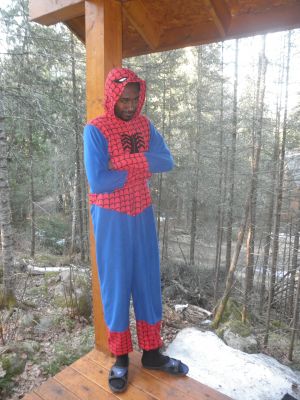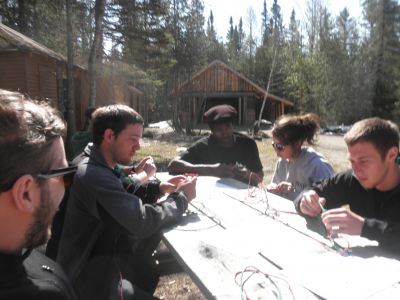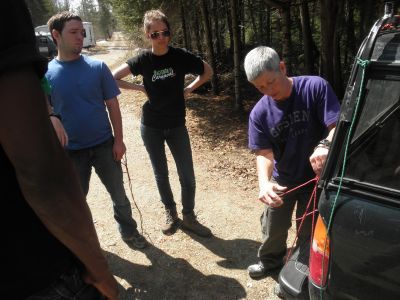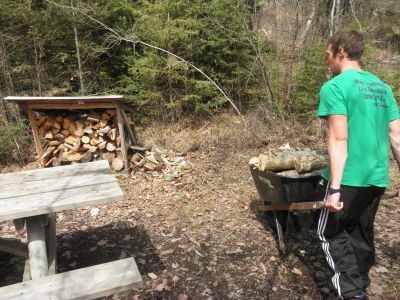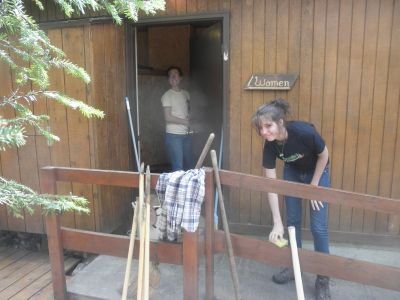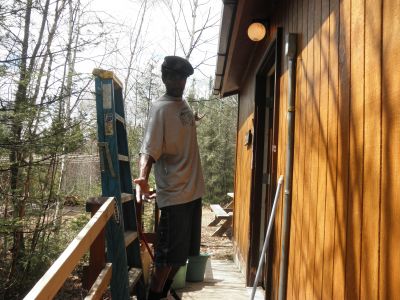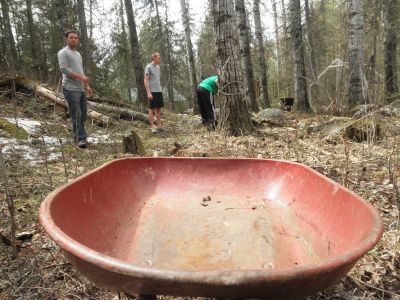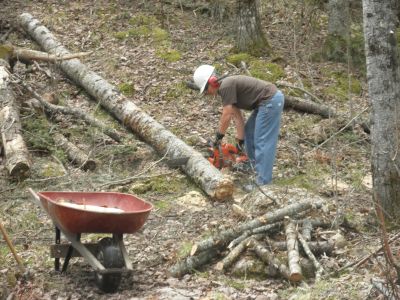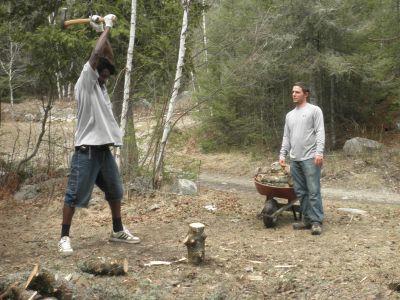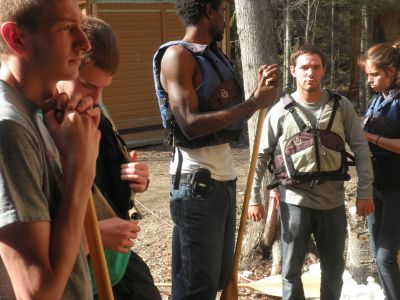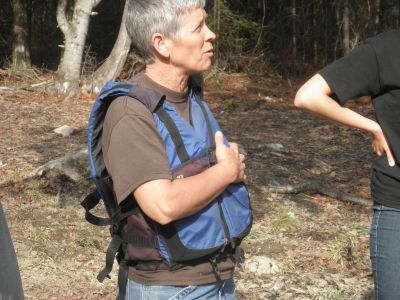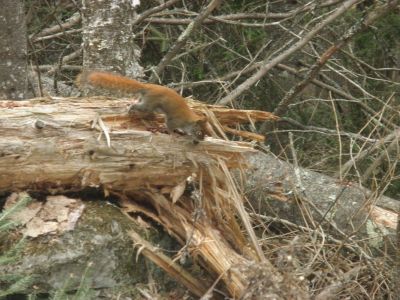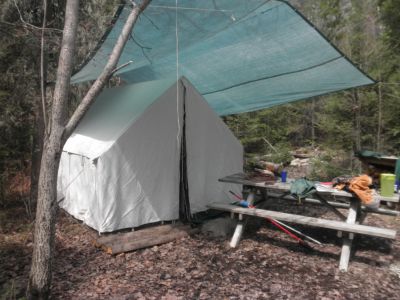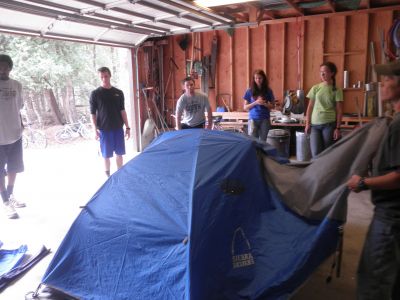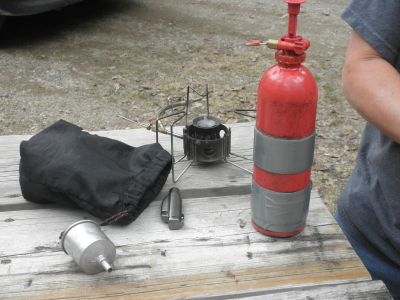After two full days of work, Goshen College Students have helped Wilderness Wind staff unpack the camp materials needed to provide service for the rest of the season. Throughout the week, they will be providing some general maintenance tasks before setting out on the water.
According to the National Forest Service, almost all of the lakes are covered in ice–the only exception being the rivers with their constantly moving water. If the ice remains, the group’s plans might change. Nevertheless, nature might lend a hand to melt the ice–so for now, the students are silently hoping that will happen.
One of the favorite traditions of Wilderness Wind is taking 20 minutes of silence after breakfast every morning. Prefaced with a devotional or meditation, both staff members and guests would move freely about the campground in silence, reflecting on the meditation or simply letting the mind wander.
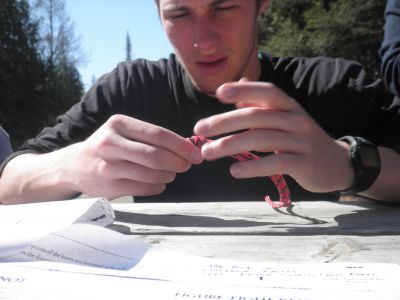
Freshman Logan Steingass practices tying a square knot, which will connect two pieces of rope together.
Yesterday, after finishing our 20 minutes of quiet time, we were instructed on various methods of tying knots. We learned about a variety of different purposes for knots, including joining two ropes together, creating a hitch, and securing cargo.
After our lesson with knots, we began working for the camp. While Sunday Mahaja, Emma Patty, and Rebekah Steiner cleaned out the bath house, I joined Daniel Graber, Josh Schlabagh, and Logan Steingass in clearing brush, splitting fallen trees, and moving chopped wood over to fire rings to be used by future campers.
Once finished with the work and lunch, we all headed down the hill to the canoe shed to pick out life jackets, paddles and packs. Along with that came special dry-sacks, which are essentially large rubber watertight sacks–one for our clothes, and one for our sleeping bags.
This morning, however, our 20 minute session of quiet time was broken with a large crash.
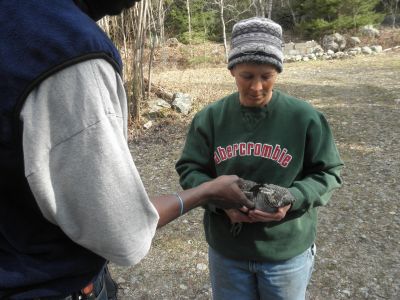
Val Hershberger holds a female ruffed grouse after it crashed through a window of WW’s staff house, while Junior Sunday Mahaja examines its feathers.
Emerging from the woods with my coffee in hand, I found Val holding a ruffed grouse (a bird about the size of a large pigeon) that had broken a window of the staff house. It was an unfortunate occurrence, and it made for a sobering morning.
Today, we focused mostly on the wood-framed tents. Once the wooden pads were cleaned, the tent canvases were draped over the frames. After that, tarps were stretched and suspended overtop of the tents to provide extra protection from the elements.
It isn’t an easy task–most of the tarps are mislabeled, and picking out the best trees to anchor the tarps tends to be mostly guesswork. Nevertheless, we finished with those tents and prepared to learn how to set up our own tents after lunch.
As of this year, Wilderness Wind is fortunate to have a few new tents that we will be
using. These tents are ideal since unlike other conventional tents, the steel frames are lightweight and are designed so that the tent clips onto the frame, instead of pushing the frame through a groove.
After learning the basics of a camp stove, we finished out the day preparing for our animal fact-sheets and our projects, and an evening class session about orienteering with maps and compasses.
Reviewing how to use a compass furthers my excitement for this trip, especially since the maps remind me of the path my family took last August from Moose lake, across Knife lake, and through a series of portages into Ima lake before portaging back to Snowbank lake to be taken home.
Hopefully tonight’s gentle rain will help thaw out the layer of ice covering the waters. It would be a huge shame to come all this way only to miss out on canoeing, and everyone at the camp is praying for rain.
